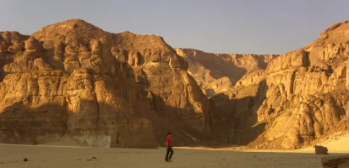Ice Ages occur cyclically in Earth’s life time. Three main circumstance must occur simultaneously for this to be possible.
Perihelion, Angle of Earth’s tilt and the elliptical shape of the planetary orbit.

Ice Ages occur cyclically in Earth’s life time. Three main circumstance must occur simultaneously for this to be possible.
Perihelion, Angle of Earth’s tilt and the elliptical shape of the planetary orbit.
The Humboldt Current is one of the plant’s ocean gyres and it brings rich nutrients from Antarctica to create vast fishing.
This circular flow of water is a phenomenon repeated around the world. There are similar ocean gyres in the North and South Atlantic, and in the Indian Ocean.

In southwest Egypt is The Great Barrier, or Gilf Kebir. A Sandstone plateau over 7,000 kilometres in length.
Isn’t it astonishing that the Earth’s tilt has such a dramatic impact? It’s that tilt that drives our seasons and powers our weather. It’s had a profound influence on our human history, and even today it dictates how and where we live on this extraordinary, unique planet of ours.
Kate Humble goes for a drive in a very ordinary car, on a very special road, the fatest road in the world.
The Earth moves fastest at the equator, because this is where it’s circumference is greatest, so it has the longest distance to travel in a single day.
Kate Humble visits the Ecuador highlands on the autumn equinox to consider the root of our weather. This area is the engine room of the planet
The heat from the sun drives the winds that power the global climate, and it all starts here on the equator.
Dr Helen Czerski uses a child’s roundabout to demonstrate the phenomenon known as the Coriolis effect. And how this is instrumental in causing hurricanes.
It’s now early September. Although the summer is almost at an end, in the northern hemisphere it has a sting in its tail. Because this is hurricane season. The development of a hurricane is a wonderful example of how the Earth’s spin controls our weather.
Circulating air currents from the equator create eddy-like climate cells within the atmosphere.
The spin of the Earth makes the weather here in the UK unusually changeable, and particularly hard to predict. The fact that you wake up every morning and the atmosphere surprises you, just adds to the spice of life.
A truly wondrous natural location near Belize. The Great Blue Hole contains stalactites from a past when this area was above sea level.
20,000 years ago, the entire surface of the world’s oceans was 120m below where it is today. So where did the ocean go? The answer is that it was on land but it wasn’t a liquid water, it was ice, because 20,000 years ago, our planet was in the middle of an ice age.
The immense Barringer Crater, in Arizona, is over a kilometre wide and was nade by a meteorite only 50m wide.
Hidden underneath what is today a place called Chicxulub in Mexico is a huge crater. The impact of the Chicxulub meteorite was cataclysmic.
The solar winds cause the spectacular polar lights displays known as aurora when they enter the Earth’s atmosphere.
From the International Space Station, you get a better sense of the awesome scale of the Aurora. We don’t often think of it this way, but the Aurora is graphic evidence that we live inside the atmosphere of the sun. This is the Sun’s atmosphere colliding with the Earth’s atmosphere.
By continuing to use the site, you agree to the use of cookies. more information
The cookie settings on this website are set to "allow cookies" to give you the best browsing experience possible. If you continue to use this website without changing your cookie settings or you click "Accept" below then you are consenting to this.